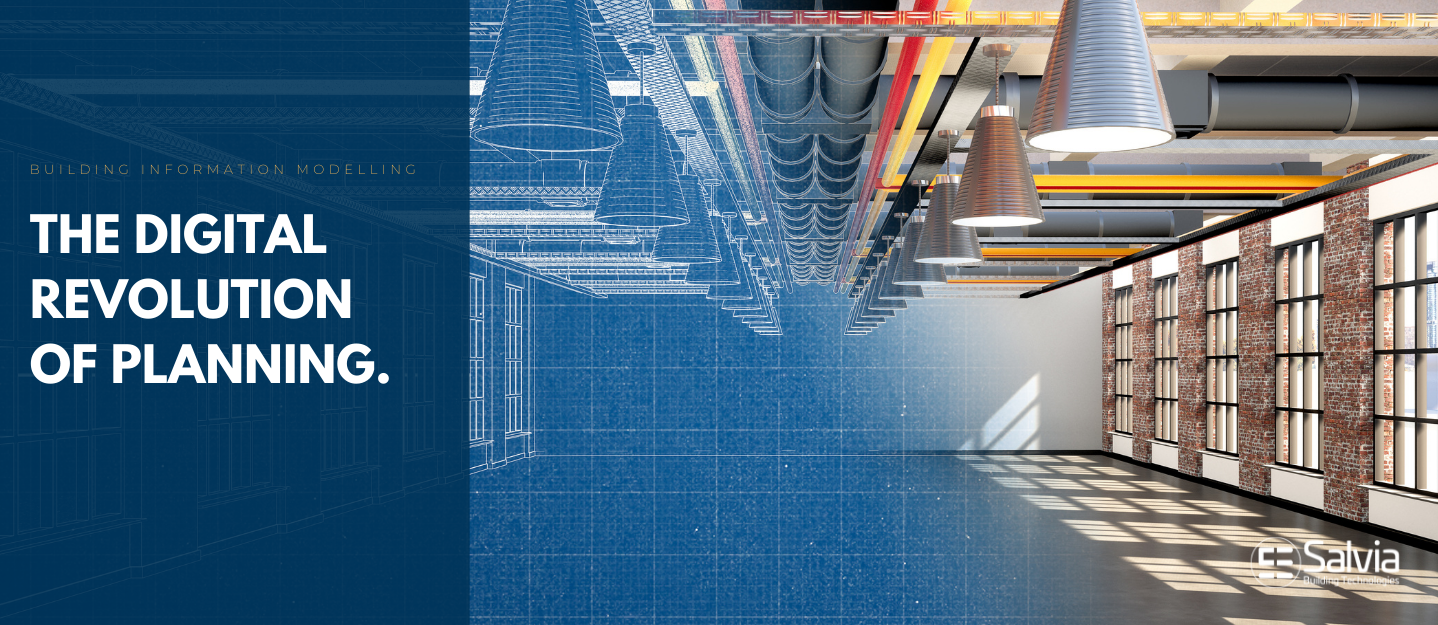Paper plans were yesterday's news. At least if you look to the future and open up your own company to the fusion of virtual and craft. The recipe for success in the digitalisation of construction processes is "Building Information Modelling," or, for short, BIM. With the help of the new planning method, the planning, construction, and management of buildings can be efficiently networked so that all relevant data is bundled and digitally recorded.
This is accompanied by profound changes in the areas of project management and the processes of a construction project. Therefore, anyone who wants to use this planning method successfully should be familiar with it. This is where the experienced team from Salvia building technologies comes into play. Because we always think one step ahead and have been building on professional BIM management in the truest sense of the word for years.
Time for a change: What can BIM do?
In short, the system improves two central aspects of construction and process planning: quality and efficiency. It is possible to plan a project virtually concerning costs, scheduling, and possible problem situations. Nowadays, a lot of difficulties are still solved expensively on the construction site, but they can already be eliminated during the planning process. In short: BIM is a digital revolution in planning!
The advantages of Innovation
Such interdisciplinary overall planning in one system offers many advantages. On the one hand, cost certainty is guaranteed for our clients at a very early stage of planning: After all, building owners have a continuous overview of the costs of a project and do not experience any unpleasant surprises. On the other hand, all crucial decisions are already made in the planning phase with BIM and thus, before construction begins.
Therefore, all collision points can be eliminated during the planning process and thus do not become a problem later on at the construction site. Sticking points are also identified at an early stage so that those responsible can react immediately. The scheduling and duration of the construction project can also be precisely defined.
Think flexibly, communicate transparently
These are the success factors if the implementation of the BIM system in the company is to succeed. Because a switch to virtual planning also requires a change in the responsible team. Open communication between the supporting structure, architects, and specialist planners is important here.
Flexible ways of thinking are also crucial. The team leader acts as the so-called BIM coordinator. In addition, there is also the function of the BIM manager. This position is assigned depending on the project. The BIM management creates the entire planning structure of a project and then discusses it with the respective BIM coordinators of the disciplines involved (structural engineering, architecture, specialist planning). During the project, the management and coordination departments are in regular exchange.
Exploring new horizons with Salvia building technology
At Salvia Gebäudetechnik, we have been using BIM for years and regularly plan our projects virtually. With over 1,400 employees, we offer our customers throughout Germany all services in the spectrum of building technology. From planning services to customised services, we cover all parts of the value chain and ensure a satisfactory result with the help of our many years of experience and expertise.

